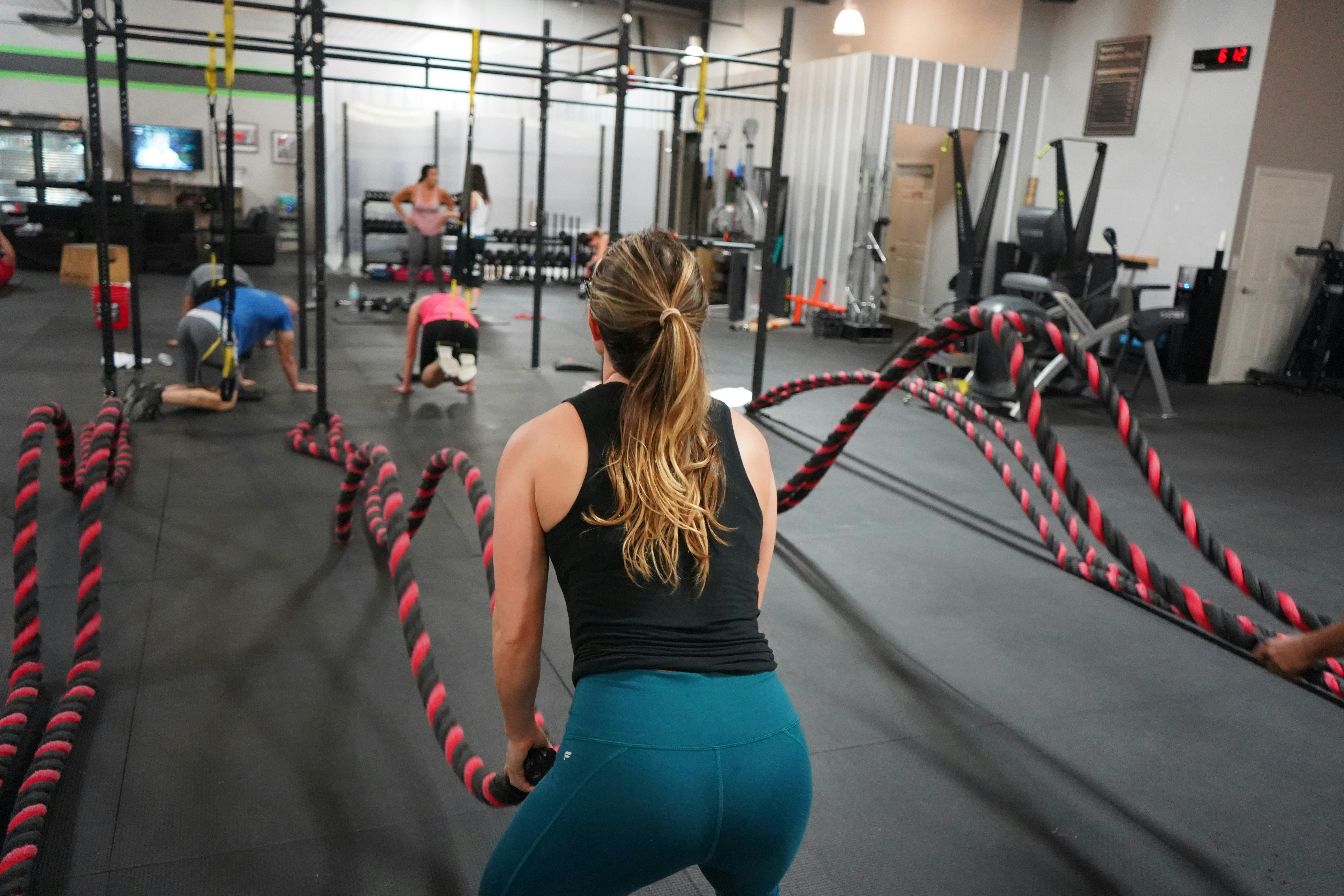Should You Train Every Day or Every Other Day? Choosing the Right Training Frequency

Should You Train Every Day or Every Other Day? Choosing the Right Training Frequency
Introduction
One of the most common questions in the fitness community is how often you should train. Should you work out every day, or is it better to train every other day? The answer depends on several factors, including your fitness goals, the type of exercises you're doing, and how your body responds to exercise. In this guide, we’ll explore the pros and cons of daily training versus every other day workouts, and help you determine the best training frequency for your personal fitness journey.
1. The Importance of Training Frequency
Training frequency refers to how often you engage in physical exercise over a given period, typically per week. The frequency of your workouts is crucial because it directly influences:
Muscle Recovery : Muscles grow and become stronger during rest periods between workouts, not during the workout itself.
Consistency : Regular exercise is key to making progress in strength, endurance, and overall fitness.
Risk of Injury : Overtraining without sufficient rest can lead to injury and burnout, while too little exercise may slow down progress.
Choosing the right training frequency is important to balance progress and recovery effectively.
2. Training Every Day: The Pros and Cons
Pros of Daily Training
Improved Consistency : If you're training daily, you may find it easier to stick to a routine. The habit of daily exercise helps keep you consistent, which is essential for long-term fitness.
Variety in Workouts : Daily training allows you to incorporate a wide range of exercises targeting different muscle groups. You can alternate between cardio, strength training, and flexibility workouts to keep things interesting and avoid monotony.
Better Cardiovascular Health : For those focused on improving cardiovascular fitness, daily cardio exercises like running, cycling, or swimming can be very beneficial. Regular aerobic exercise helps improve heart health, lung capacity, and overall stamina.
Weight Management : If weight loss or fat reduction is the goal, daily exercise can help create a greater calorie deficit, which accelerates fat loss. However, it's important to combine it with the right diet.
Cons of Daily Training
Inadequate Recovery : Without sufficient recovery time, muscles may not repair adequately, leading to muscle fatigue, overtraining, and possible injury. Muscles need time to rebuild and grow stronger.
Risk of Burnout : Exercising daily can lead to mental and physical burnout. If you don't enjoy your workouts or don't see enough progress, you might lose motivation and stop training altogether.
Increased Injury Risk : Repeated high-intensity or repetitive motions can increase the risk of overuse injuries, such as tendonitis or stress fractures, especially in exercises like running or weightlifting.
3. Training Every Other Day: The Pros and Cons
Pros of Every Other Day Training
Muscle Recovery : One of the main advantages of alternating workout days is the recovery time it allows your muscles to repair. This is particularly important for strength training, where muscle fibers need rest to rebuild and grow.
Reduced Risk of Injury : By not pushing your body every single day, you reduce the risk of overuse injuries and allow your body to recover properly between workouts. This is especially true for resistance training or high-intensity interval training (HIIT).
Sustained Motivation : Having rest days in between workouts can help keep you motivated. You'll feel less fatigued and more excited about returning to your workouts after a day off, which can prevent burnout.
Optimal Performance : With adequate rest, you can perform better during your workouts. On your workout days, you’ll feel stronger, more energetic, and able to give your best effort.
Cons of Every Other Day Training
Slower Progress for Some Goals : If you're training for a goal like extreme muscle hypertrophy or cardiovascular endurance, every other day might feel like slower progress compared to daily training. However, the trade-off is better recovery and more consistent long-term progress.
Time Constraints : If you have a busy schedule, you may find it hard to train every other day. You might feel the need to exercise every day to fit it into your routine, but this can lead to a lack of rest if you're not careful.
4. How to Choose the Right Training Frequency for You
For Beginners
If you're new to fitness, it's typically better to start with every other day training. Your body needs time to adapt to the physical demands of exercise, and alternating rest days will allow you to recover properly.
- Beginner Strength Training : Start with three non-consecutive days per week, focusing on full-body exercises like squats, lunges, push-ups, and planks.
- Beginner Cardio : For cardiovascular health, aim for 2-4 days a week of moderate-intensity exercises like walking, cycling, or swimming.
For Intermediate Lifters or Runners
For those with some experience in fitness, you can begin to increase the intensity or frequency of your workouts. However, it's still important to allow for sufficient recovery between hard training days.
- Strength Training : If you’re focusing on strength or hypertrophy, you may increase your frequency to 4-5 days per week, with a focus on specific muscle groups each day (e.g., chest and triceps on Monday, back and biceps on Wednesday, legs on Friday).
- Cardio : If your focus is on improving endurance, you might train 4-5 days per week with varied intensity (e.g., low-intensity steady-state cardio (LISS) on alternate days with higher-intensity interval training (HIIT)).
For Advanced Athletes
For advanced fitness enthusiasts or athletes, daily training may be necessary to meet specific performance goals, provided adequate recovery strategies are employed. This might involve alternating between hard and easy workout days, mixing strength, cardio, and mobility exercises.
- Strength Training : Advanced lifters may train up to six days per week, focusing on different muscle groups to prevent overuse injuries and ensure optimal muscle recovery.
- Cardio and Conditioning : Athletes may engage in daily workouts, but these would be carefully programmed to ensure proper recovery and injury prevention. High-intensity workouts might be followed by lighter days of active recovery, such as yoga or low-intensity cycling.
For Weight Loss and General Fitness
For general fitness or weight loss, training every other day can be sufficient. Focus on incorporating a mix of cardiovascular training and strength exercises.
- Strength and Cardio : A combination of three days of strength training and 2-3 days of cardio (e.g., cycling, running, swimming, or brisk walking) can help you maintain or lose weight while improving overall fitness.
5. Conclusion
The frequency of your workouts depends on your individual goals, fitness level, and how your body responds to exercise. For beginners, training every other day allows for adequate recovery and helps prevent burnout. Intermediate and advanced athletes may train more frequently, but they should still prioritize recovery and listen to their bodies to avoid overtraining.
Whether you choose to train every day or every other day, the most important thing is consistency and ensuring that your routine fits into your lifestyle, supports your goals, and allows for adequate recovery. Keep in mind that training is just one part of the equation—nutrition, sleep, and stress management are all crucial for achieving your fitness goals.
References
- Schoenfeld, B. J. (2010). "The mechanisms of muscle hypertrophy and their application to resistance training." Journal of Strength and Conditioning Research .
- American College of Sports Medicine. (2014). "Position Stand: Exercise and Physical Activity for Older Adults." Medicine & Science in Sports & Exercise .
- Haskell, W. L., et al. (2007). "Physical activity and public health: updated recommendation for adults from the American College of Sports Medicine and the American Heart Association." Circulation .




